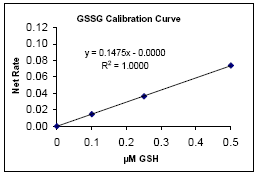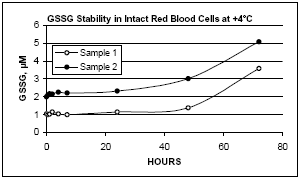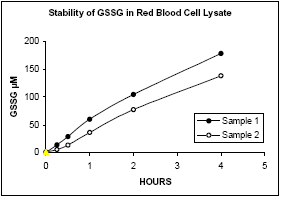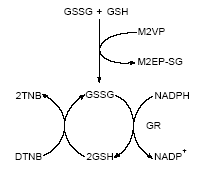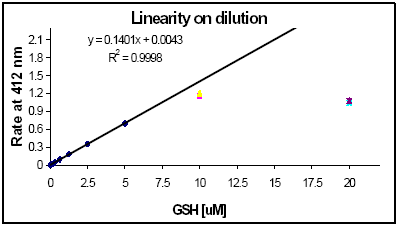371757 Sigma-AldrichGSH/GSSG Ratio Assay Kit
Productos recomendados
Descripción
| Replacement Information |
|---|
Tabla espec. clave
| Detection Methods |
|---|
| Colorimetric |
| Product Information | |
|---|---|
| Detection method | Colorimetric |
| Form | 200 Tests |
| Format | Cuvette |
| Kit contains | Chromogen DTNB, Glutathione Reductase Enzyme, NADPH, Scavenger, Assay Buffer, GSSG Buffer, Standard, and a user protocol. Each kit can be used to perform 100 tests representing the ratio of total Glutathione to the oxidized form or 200 tests of either. |
| Quality Level | MQ100 |
| Applications |
|---|
| Biological Information | |
|---|---|
| Assay time | 1.5 h |
| Sample Type | cell lysates, tissue extracts, blood |
| Physicochemical Information | |
|---|---|
| Sensitivity | 9 nM GSSG |
| Dimensions |
|---|
| Materials Information |
|---|
| Toxicological Information |
|---|
| Safety Information according to GHS |
|---|
| Safety Information |
|---|
| Product Usage Statements |
|---|
| Packaging Information |
|---|
| Transport Information |
|---|
| Specifications |
|---|
| Global Trade Item Number | |
|---|---|
| Número de referencia | GTIN |
| 371757 | 0 |
Documentation
GSH/GSSG Ratio Assay Kit Ficha datos de seguridad (MSDS)
| Título |
|---|
GSH/GSSG Ratio Assay Kit Certificados de análisis
| Cargo | Número de lote |
|---|---|
| 371757 |
Referencias bibliográficas
| Visión general referencias |
|---|
| Anderson, M. 1996. Glutathione in Free Radicals, A Practical Approach, ed. N.A. Punchard and F.J. Kelly Oxford University Press, New York, p 213. Richie, J.P. Jr., et al. 1996. Clinical Chemistry 42, 64. Griffith, O.W. 1980. Analytical Biochemistry 106, 207. Tietze, F. 1969. Analytical Chemistry 27, 502. Guntherberg, H., and Rost, J. 1966. Analytical Biochemistry 15, 205. |
Folleto
| Cargo |
|---|
| Kit SourceBook - 2nd Edition EURO |
| Kits SourceBook - 2nd Edition GBP |







